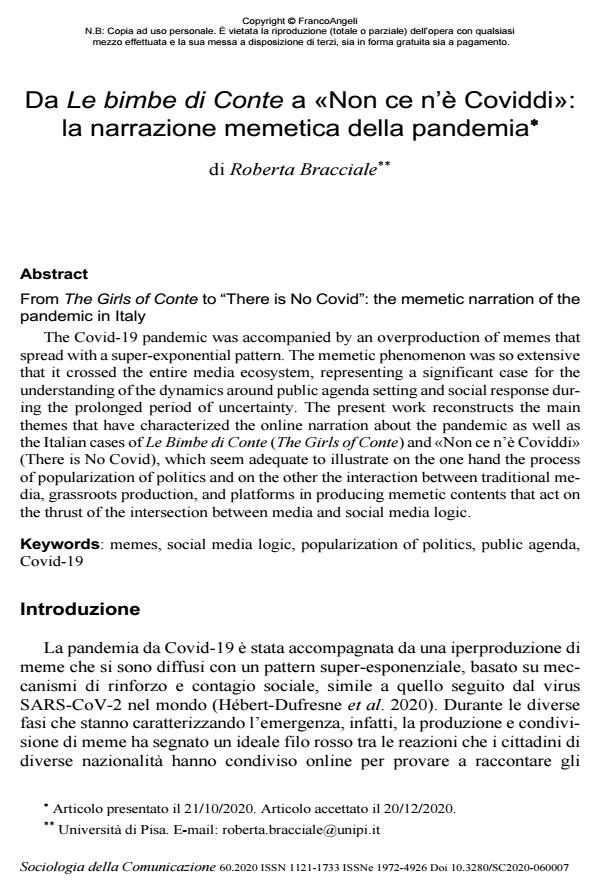From The Girls of Conte to "There is No Covid": the memetic narration of the pandemic in Italy
Journal title SOCIOLOGIA DELLA COMUNICAZIONE
Author/s Roberta Bracciale
Publishing Year 2021 Issue 2020/60
Language Italian Pages 15 P. 67-81 File size 465 KB
DOI 10.3280/SC2020-060007
DOI is like a bar code for intellectual property: to have more infomation
click here
Below, you can see the article first page
If you want to buy this article in PDF format, you can do it, following the instructions to buy download credits

FrancoAngeli is member of Publishers International Linking Association, Inc (PILA), a not-for-profit association which run the CrossRef service enabling links to and from online scholarly content.
The Covid-19 pandemic was accompanied by an overproduction of memes that spread with a super-exponential pattern. The memetic phenomenon was so extensive that it crossed the entire media ecosystem, representing a significant case for the understanding of the dynamics around public agenda setting and social re-sponse during the prolonged period of uncertainty. The present work reconstructs the main themes that have characterized the online narration about the pandemic as well as the Italian cases of Le Bimbe di Conte (The Girls of Conte) and «Non ce n’è Coviddi» (There is No Covid), which seem adequate to illustrate on the one hand the process of popularization of politics and on the other the interaction be-tween traditional media, grassroots production, and platforms in producing me-metic contents that act on the thrust of the intersection between media and social media logic.
Keywords: Memes, social media logic, popularization of politics, public agenda, Covid-19
Roberta Bracciale, Da Le bimbe di Conte a «Non ce n’è Coviddi»: la narrazione memetica della pandemia in "SOCIOLOGIA DELLA COMUNICAZIONE " 60/2020, pp 67-81, DOI: 10.3280/SC2020-060007